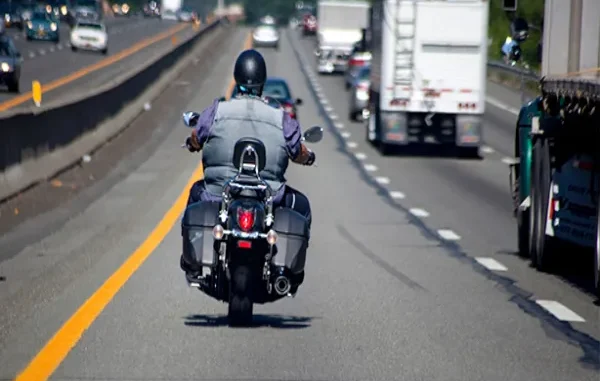
Riding a motorcycle offers a sense of freedom that’s hard to match. It’s just you, the bike, and the open road. But with that freedom comes a responsibility to stay safe. Motorcyclists are more vulnerable than drivers in cars, which is why mastering defensive riding is not just a skill—it’s a necessity. This guide will provide practical defensive techniques that can help you anticipate and avoid potential dangers, ensuring every ride is as safe as it is thrilling.
Learning to be a defensive rider means you’re always one step ahead. It’s about actively managing the space around you, being visible to other drivers, and having a plan for unexpected situations. These skills can significantly reduce your risk of an accident and give you the confidence to handle whatever the road throws your way.
Mastering the Art of Defensive Riding
Defensive riding is a proactive mindset that transforms how you interact with your environment. It involves staying alert, communicating your intentions clearly , and maintaining a safe buffer from other vehicles. Here are seven essential techniques every rider should practice.
1. Increase Your Visibility
Many car drivers involved in motorcycle accidents claim they “just didn’t see” the rider. As a motorcyclist, you need to do everything you can to make yourself seen. This goes beyond just having your headlights on.
- Wear Bright Gear: Choose brightly colored or reflective gear, especially for your helmet and jacket. Neon or fluorescent colors stand out during the day, while reflective materials are crucial for night riding.
- Use Your Horn: Don’t be shy about using your horn. A quick beep can alert a driver who seems distracted or is about to merge into your lane without looking.
- Position Yourself Wisely: Ride in the part of the lane where you are most visible. Avoid lingering in other vehicles’ blind spots. The left portion of the lane often provides the best line of sight for drivers in front and behind you.
2. Maintain a Safe Following Distance
Tailgating is dangerous for any driver, but it’s especially risky for motorcyclists. You need more time and space to react and brake than a car does. The “three-second rule” is a great guideline to follow. Pick a fixed object on the road, like a sign or an overpass. When the vehicle ahead of you passes it, start counting. If you reach the object before you count to three, you’re too close. In bad weather or poor visibility, extend this to four or five seconds.
3. Always Have an Escape Route
Traffic is unpredictable. A car might swerve, a door might open, or a pedestrian could step into the road. Always be aware of your surroundings and identify potential escape routes. This means constantly scanning the road ahead and to your sides. Ask yourself, “What would I do if that car suddenly stopped?” or “Where would I go if that truck changes lanes?” Having a pre-planned exit strategy gives you a critical advantage in an emergency.
4. Scan the Road Ahead
Looking only at the car directly in front of you isn’t enough. You need to scan the road far ahead to spot potential hazards early. Look for brake lights several cars ahead, watch for signs of traffic slowing down, and be aware of intersections, construction zones, and other areas where conflicts might arise. By anticipating what’s coming, you give yourself more time to react smoothly and safely.
5. Be Extra Cautious at Intersections
Intersections are one of the most common places for motorcycle accidents to occur. Drivers turning left often misjudge a motorcycle’s speed or fail to see it altogether. As you approach an intersection, slow down and be prepared to stop. Make eye contact with drivers to ensure they see you. Cover your brakes and be ready to take evasive action if a car starts to turn in front of you.
6. Assume You Are Invisible
This might sound pessimistic, but it’s a core principle of defensive riding. Ride as if no one else on the road can see you. Don’t assume a driver will yield the right-of-way or stop at a stop sign. This mindset forces you to be more cautious and rely on your own skills and awareness rather than trusting other drivers to do the right thing. It encourages you to be prepared for the worst-case scenario at all times.
7. Practice Emergency Braking and Swerving
Knowing how to brake hard and swerve correctly can save your life. Find an empty parking lot and practice these skills regularly. Learn how your bike responds during a quick stop and how to apply both front and rear brakes without locking them up. Practice controlled swerving to get a feel for how your bike handles when you need to make a sudden move to avoid an obstacle. The more you practice, the more these reactions will become second nature.
Ride Smart, Ride Safe
Becoming a skilled defensive rider is an ongoing process. It requires constant attention, practice, and a commitment to prioritizing safety on every journey. By incorporating these techniques into your daily riding habits, you can significantly reduce your risk and enhance your enjoyment of the road.
However, even the most careful riders can find themselves in an accident caused by someone else’s negligence. If you’re ever in that unfortunate situation, it’s important to know your rights and options. Consulting with an experienced legal professional, such as a Salt Lake City auto accident attorney, can help you navigate the aftermath and ensure you receive the support you need.

Leave a Reply